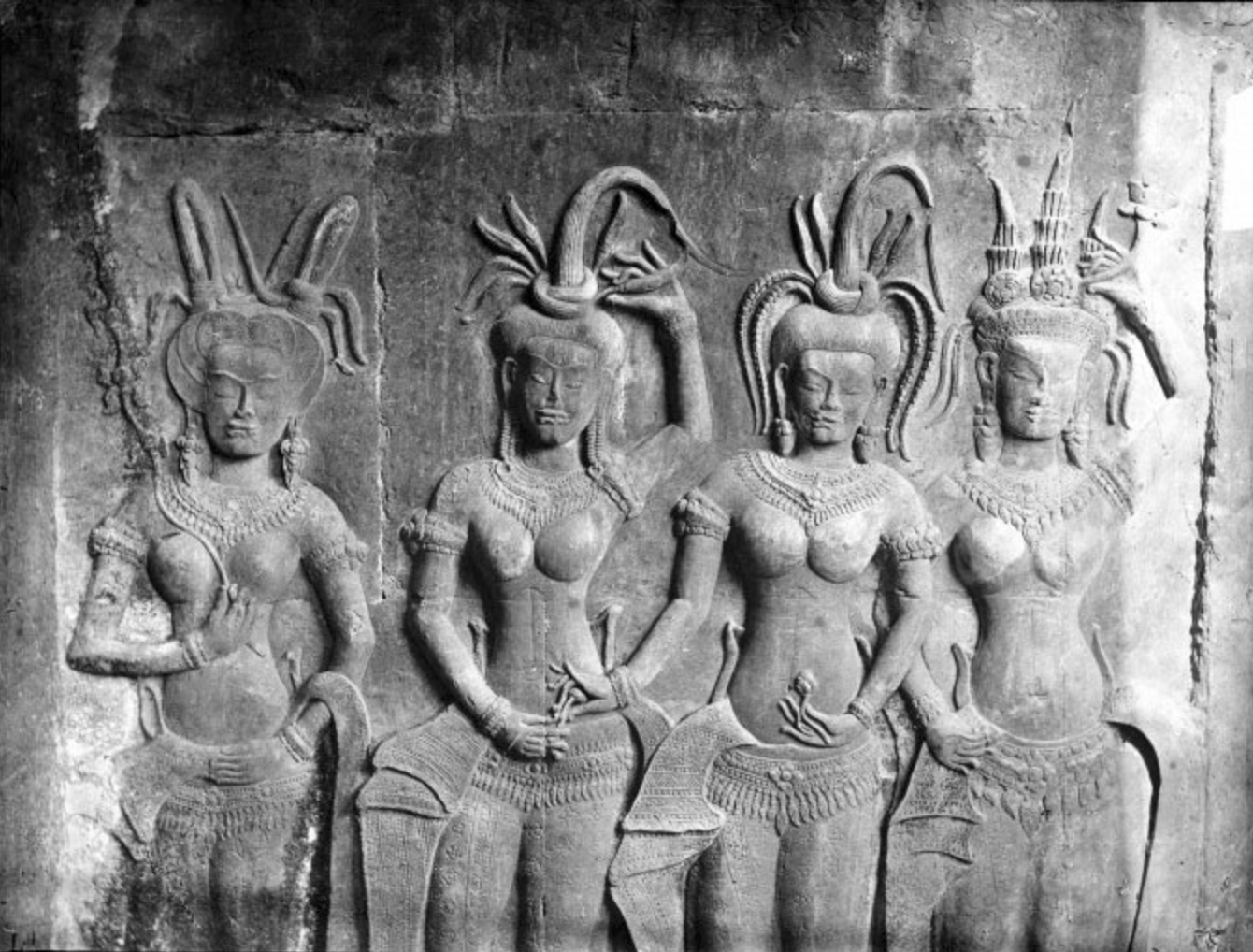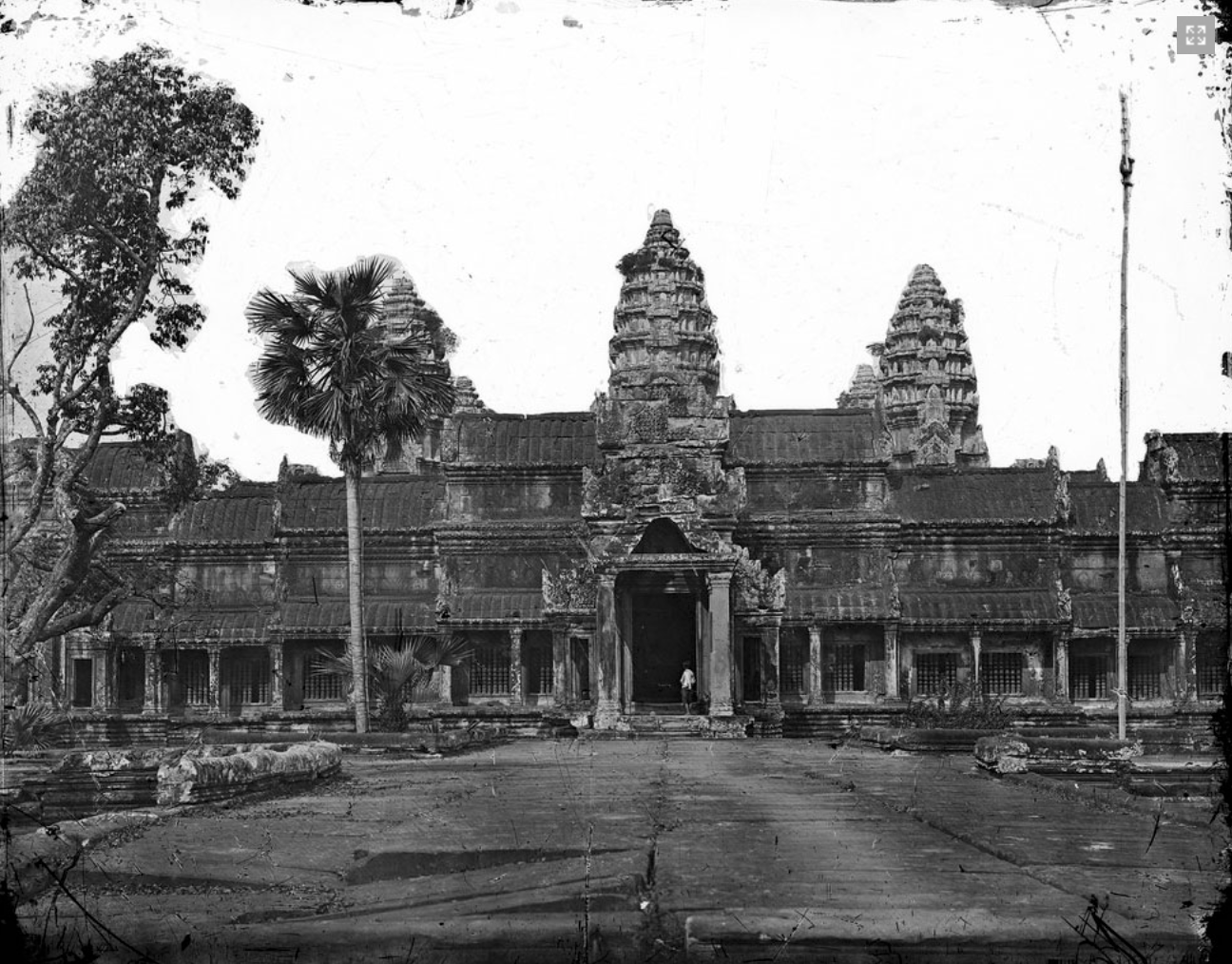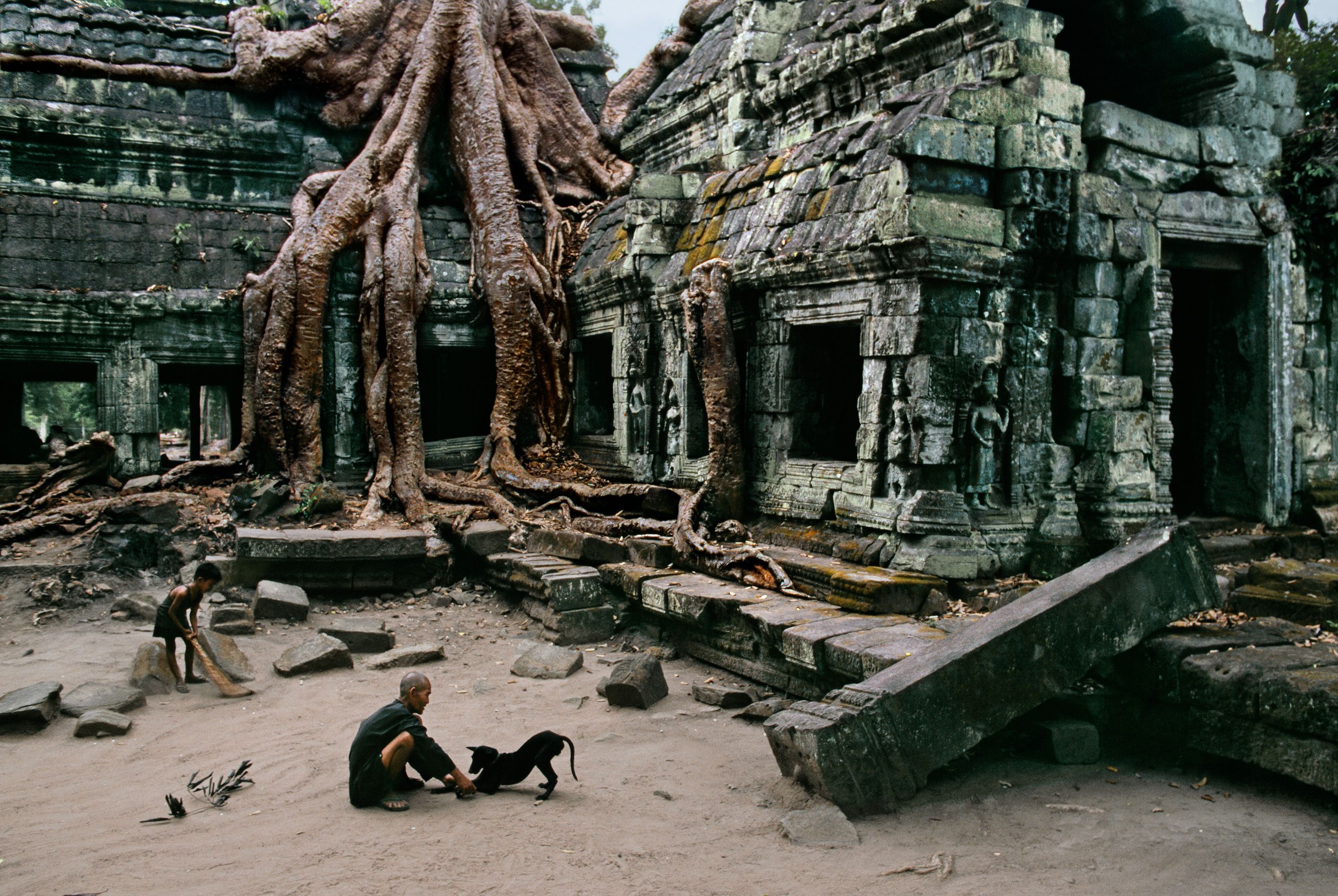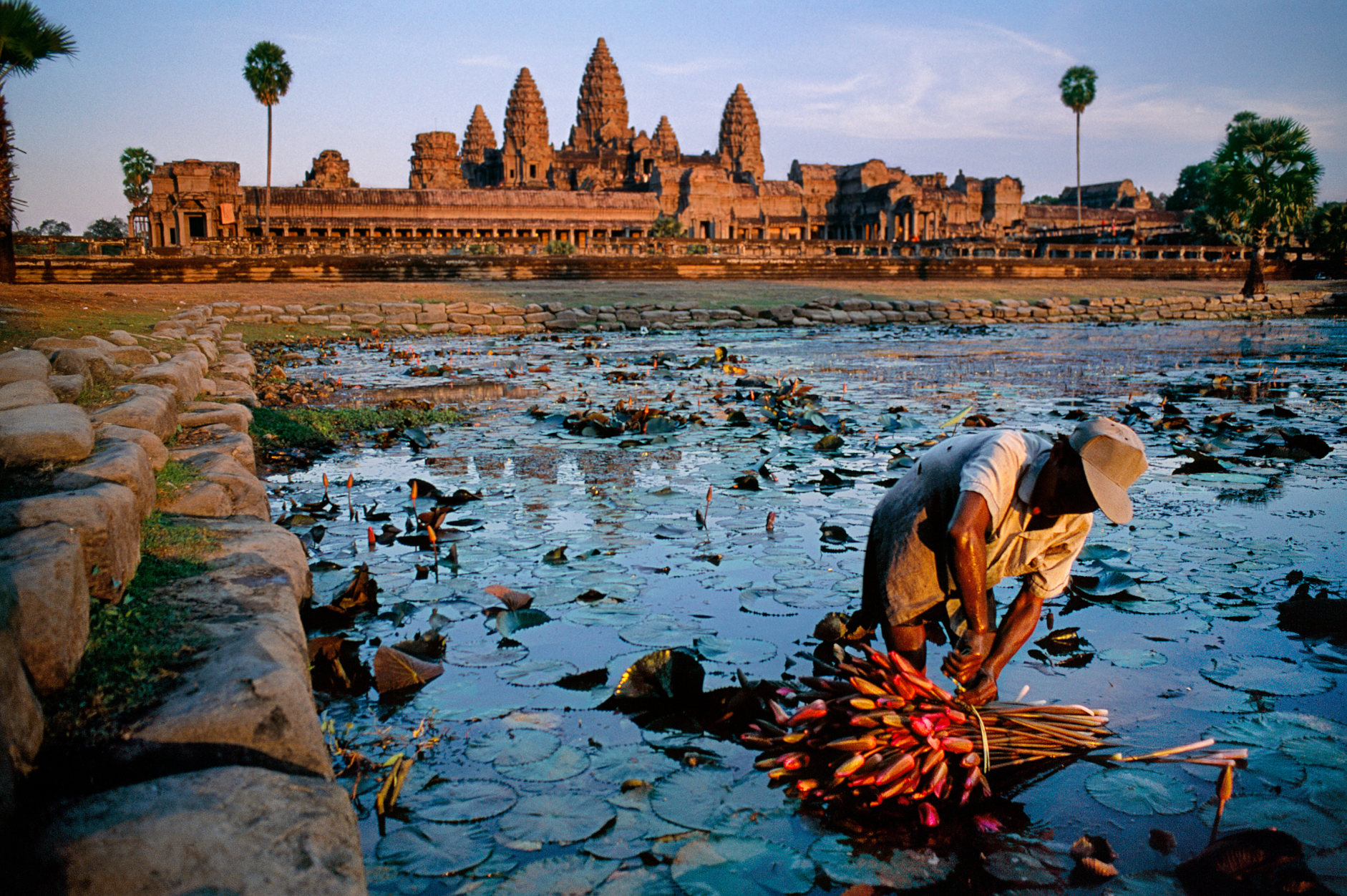August 23, 2019
This is my next first post. There are a million ways to die, and a million and one ways to publish.
For a while I’d experimented with various ways to present my writings online, but they all resulted in an existential business card—pretty useless. And uselessness is no good.
David Merfield’s Blot feels right. It’s a lovely little place to host a mish-mosh of content in a minimal package. So here I am.
Typing now from Kyiv, I’ll gradually build this collection to a level of personal satisfaction and hopefully weasel into some niche along the way.
Let’s see where it goes from here.
███
May 1, 2018
A photograph pauses time from the single perspective of a spatially located point. Photography, collectively, presents a series of such perspectives, enabling entire historical entities such as the sacred city of Angkor to be accurately documented, historicized, appreciated, and relived. Cambodia’s Angkor is a dynamic place whose story was not at once told and closed shut—the site remains alive so long as it is shaped by nature and its many visitors. While we cannot know exactly how Angkor looked as the thriving capital of the Khmer Empire, we do have photographic evidence of how the site appeared over 150 years ago. Early pictures were captured using a method called wet plate collodion in which chemicals developed over a span of
fifteen minutes within a portable darkroom. Every snap of the shutter had to be painstakingly intentional, meaning what preliminary images exist today are likely only those perspectives which the artists deemed essential.

Apsaras at Angkor Wat by John Thomson
This photo taken by Scottish photographer John Thomson highlights four apsara reliefs found at Angkor Wat in 1866. Being one of the earliest photographers to document Southeast Asia, Thomson’s goal was to capture the region on behalf of Western eyes that had only held imaginative, exotic views prior. With shots limited in number, quality, and color, not every angle could be brought back with him to Europe. Thomson astutely focused on not only up-close detail but big-picture landscapes as well. Below is a view from the front of the complex.

Frontal View of Angkor Wat by John Thomson
Significant details are discernible such as the Khmer prangs, corbeled archway, foliage, and a human for scale. Compare this photograph with the one below of a different angle of the same site by a contemporary artist, Émile Gsell.

Rear View of Angkor Wat by Émile Gsell
The jungle overgrowth in Gsell’s image encroaches upon the site, providing a contrasting narrative to that of Thomson’s. One who only viewed Gsell’s photo set might infer that the site was set deeper in the jungle or perhaps was uncared for longer than it was. While later photographic ventures would add perspective to the history of Angkor thereby filling in certain gaps of understanding, what views were captured early on are still pinnacle samples for use in ongoing preservation efforts. As heritage scholar Colin Sterling notes, “These images provide a further visual dimension of critical analysis toward the overarching theme of how an ‘ethical’ relationship between photography, preservation, and heritage at Angkor might work.” It is so that the site could never be truly returned to its prime state of use. In light of this arises the ethical dilemma as to whether or not use of early photographs as
blueprints for restoration is appropriate. Perhaps a clarification of photographic purpose is in order. Consider the following photo by American photographer Steve McCurry.

Child, Man, and Dog at Angkor by Steve McCurry
McCurry captures a more modern Angkor in full color. A banyan tree drips over the side of ruins, its tentacles caressing sunken rubble as a native boy sweeps the sand and an elder man plays with a dog. This photo, without context, stands as an artwork of its own and was taken with that intention. According to McCurry, “What is important to my work is the individual picture […] of course they have to be put together coherently. But what matters most is that each picture stands on its own, with its own place and feeling.” Photographic purpose, or intentionality, is integral to understanding the history of cultural sites and implementing photos as tools, whether for restoration, documentation, or marketing. Thomson’s early photographs unintentionally showed, “the inability of the inhabitants of Angkor to care for their surroundings,” a clear indication of the white man’s burden to take Angkor under their wing for research rather than providing aid and agency to Cambodia. McCurry, on the other hand, humanizes Cambodians in his photography by showing them inhabiting and caring for their landmark site.

Man Wrapping Lotuses by Steve McCurry
According to research by Eric Heikkila and Philippe Peycam in the Journal of Planning Education and Research, the largest contingent of tourists to Angkor in the last decade has been Cambodians themselves. According to their study, “[Their visit] amounts to a kind of pilgrimage mixing religious and national sacredness attached to Angkor. More than simple visitors, they now represent the bulk of real estate investors as well: those who stay but also own hotels, villas, and apartments.” Photographs then are more than travel incentive—they are notions of national pride. While on the surface photographs appear as nothing more than instantaneous art, they are in fact symbolic artifacts unique to the time and context in which they were taken. If we consider Angkor to be alive, photographic depictions of it are no less different each day than photographs of ourselves. And it is indeed alive.
Despite Angkor’s heyday being hundreds of years in the past, political upheaval in the late 20th century has brought great change and concern for its protection to the forefront of UNESCO and the local Cambodian government. It was only until February of 1995 that the Authority for the Protection and Management of Angkor and the Region of Siem Reap, APSARA, was established. In the years leading up to this formation, archaeologist Thierry Diwo and photographers John McDermott and Kenro Izu arrived at the site to document it expressly for preservation and with respect for the Cambodian people in mind. McDermott’s specific aim was to produce images that would transcend the paused-time nature of photography by creating timeless images.

Gate at Angkor Thom by John McDermott
This gate at Angkor Thom harks back to the early, 19th-century photography of Thomson and Gsell. It was taken in sepia tone and features a corbeled archway topped with a Bayon Buddha face and surrounded by jungle foliage. Of such timeless artwork, Sterling notes: “The desire to depict a ‘timeless’ Angkor, and the continued popularity of such photographs, has important ramifications for any ethical engagement with the site, not least whether the implied musealization works for or against disenfranchised stakeholders.” Does a musealized Angkor hurt its meaning to the world outside of Cambodia? Certainly some without proper background might assume that the site has been forsaken as a forgotten relic. The 2001 film Lara Croft: Tomb Raider fetishizes Angkor by appropriating it as a mystical destination that might as well have been dreamt up. In this way, photography can be more influential than textual research in its portrayal of the truth. Luckily, modern photography allows us to capture unlimited angles and with such profound detail. Use of videos, three-dimensional models, and even virtual-reality experiences are burgeoning in the field. These formats enable sites like Angkor to be scrutinized and recorded from the omniscient angle of satellites down to the very molecules that make up the Bayon’s smiling lips.

Angkor Temple Complex via Apple Maps
Photography at Angkor over the decades has shifted dramatically in terms of meaning, medium, and morality. Early colonizers without appropriate understanding of the site only captured it for their own aggrandizement. This stage should be appreciated and not demonized, however—without initial amazement and unknowledgeable appreciation, we may not have the early images we do today and one thing might not have led to the next in terms of preservation efforts. In contrast and decades later, photojournalists like Steve McCurry snapped scenes at Angkor to artistically tell its story—or allow itself to tell its story. Now, projects such as Living with Heritage at Angkor, “[Focus] on development of open source […] spatial information-management systems designed to provide access to heritage management information at a local agency level.” The tool of the photograph as it allows for the
presentation of multiple diverse perspectives has proven invaluable to many if not all fields, not least of which is art history. Cambodians can celebrate and learn about their own history through photographs and international guests can indulge in and be inspired by the awe that is Angkor—as they do, by the thousands.

Visitors at Angkor Wat by Mahesh Krishnamurthy
Written for a college class. Exact date unknown.
School
December 7, 2017

I spoke with Tom Osborne soon after I was stunned by images of his watch. Osborne, founder of the L’Heure Luxe wristwatch, is a man with a vision.
Anyone attempting to bust into the luxury watch industry has to be a little bit nuts. Rolex has an iron grip on timepieces worth their salt. IWC Schaffhausen boasts classic case design. Cartier is, well, Cartier. When you think pilots and watches together, you think Breitling. All of these recognized names have years to back them. They have history. L’Heure Luxe does not—and that’s what is so impressive.
While the budding brand is not nearly on the same plane as the Piguets, Pateks, and Jaeger-LeCoultres, Osborne doesn’t want it to be. At least not yet. His goal with L’Heure Luxe is to introduce the market to a quality, Swiss Made timepiece lineup at a relatively affordable price. Relatively? The watches he designs have all of the best features of the codified Swiss Made guarantee, yet are void of scalding markup.
A $500 watch certainly isn’t your more practical Timex replacement, but it places L’Heures on a luxury tier (hence the “Luxe”) that is reasonably affordable with some proper budgeting. A great gift, perhaps. However acquired, the owner of the wrist on which it will be worn will feel an exuding quality. And despite ethical concerns for conniving consumerism, there is still something to be gained from treating oneself. I consider the piece a possible first string of an heirloom—a vessel of value.

What draws me especially to the L’Heure Luxe Chronograph is its bizarre power to draw me from routine. I am so used to strapping on an Apple Watch which has insidiously syphoned all attention away from my collection of traditional timepieces. I feel bad leaving the others neglected, especially since the Apple Watch has absolutely no personality despite the ability to swap straps and faces. Alas, the practicality of a mini iPhone is too appealing to resist—or at least was. I have come to learn that constant access to notifications is far worse for mindfulness than I had originally thought. While I pull my phone out less, I flick my wrist three times as much. The true beauty of analog runs more than crown-deep.
⏤
How did Tom Osborne get into the watch world? While he spent some time social media managing and heading PR for an online watch brand, he has always appreciated a solid timepiece. His father owned a few head-turners and, naturally, Osborne wanted the same. After backing Pebble smartwatches, swapping Casios, and testing watch startups, it was time to dive into a more proprietary brand—his own.
Rummaging through countless Chinese and Japanese watch guts, Tom realized that the Swiss are more than good for their cheese and fresh air. Following the likes of Rolex and other Swiss-stamped items, the craftsman begged for multipurpose design. A perfect watch is one which serves as both a fundamental utility and a fashion symbol, with little compromise.
An obvious challenge for L’Heure Luxe will be to rise above other similar ecommerce watch companies. Tom started his business with intimate knowledge of how these startups function. He realized early on that he mustn’t under deliver on quality or offer too premium of a price tag in order to come out ahead. This credo shines through the in chronographs themselves, as the underlying brand clearly balances both producer and consumer values.
Rather than rival the Rolexes, Tom looks toward brands like Dollar Shave Club and Warby Parker for inspiration. Their business models are more in line with L’Heure Luxe, where quality is offered for a fair price relative to the competition. To accomplish this, L’Heure doubles down on Swiss watchmaking tradition as evident in its bold flag logo.

Tom takes hints from digital marketing giants Ryan Holiday, Gary Vaynerchuck, and Seth Godin. He absorbs one book each month to feed an ever more efficient lifestyle. Working in sprints, projects like L’Heure Luxe come to realization via snippets of hard work. Internalizing the fact that consumers are increasingly wary of what they are actually getting when purchasing a product, Tom constantly brainstorms ways in which the genuineness of L’Heure can be communicated. Strong background knowledge of digital marketing is at his disposal. If you have the means and truly admire the brand and what it stands for, a L’Heure Luxe timepiece awaits you on some shelf in Switzerland.
All canonical watch companies were, at some point, unknown. With time, they gained trust and evolved along with the aesthetics of their fine-tuned products. To invest in a L’Heure is to invest in Tom Osborne’s vision for the watch industry and the future of luxury.

⏤
I acknowledge that a very narrow audience is able to indulge in such lifestyle amenities. It is my hope that this article offered insight into an entrepreneur’s personal project journey and a niche industry more than it may have appeared to normalize extravagant goods. Consumer, capital, and environmental ethics are always a careful consideration in my writing.
This post first appeared on Medium, which I’ve steadily relocated content from for self-hosting.
Sponsored











